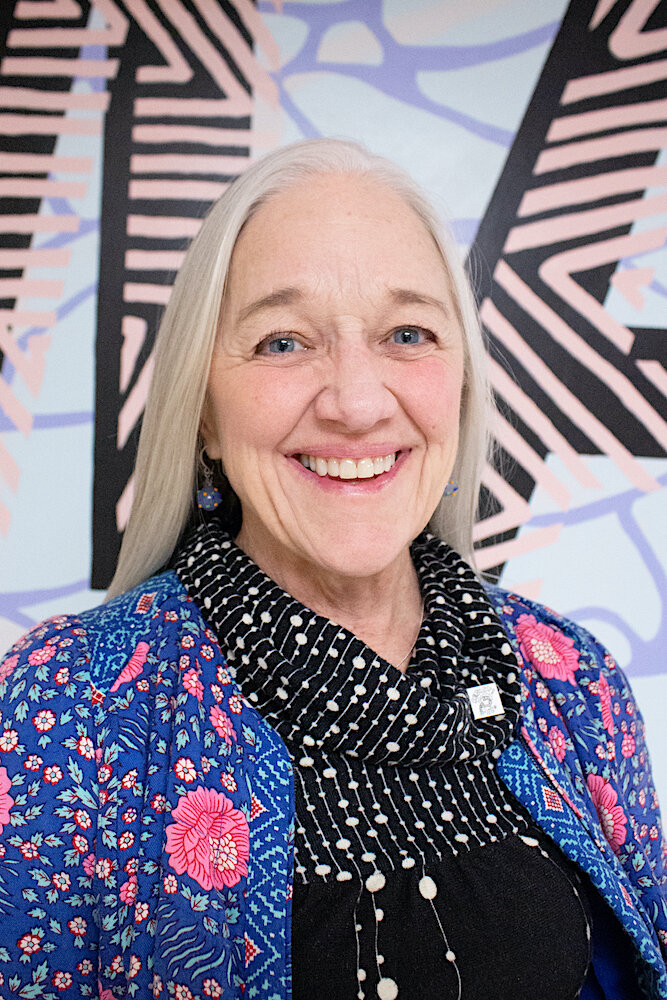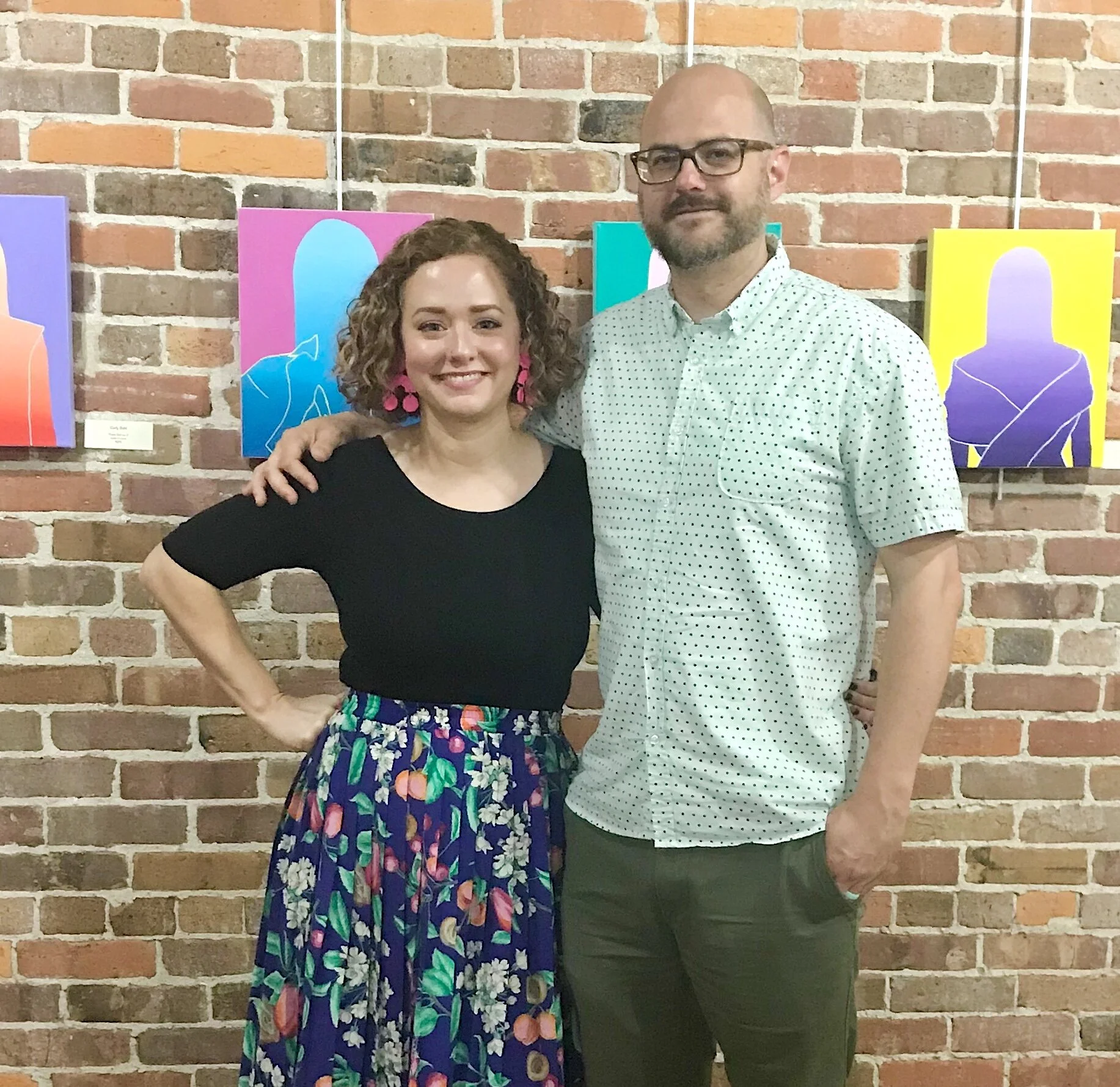Interview with artist Katherine Strause
Katherine Strause is energy – and you can feel it in her paintings. She is native of Conway, Arkansas and has been Chair of the Department of Art at Henderson State University in Arkadelphia, Arkansas, since 2007. Katherine has been involved in teaching art in some form or another (printmaking, drawing, painting) for over 30 years. She is known for her vibrant paintings of images from the past that make us consider our future. Her paintings have been featured in over sixty juried and curated exhibitions, both in the US and abroad. Katherine’s work can be viewed at her website and at Gallery 26 in Little Rock, Arkansas.
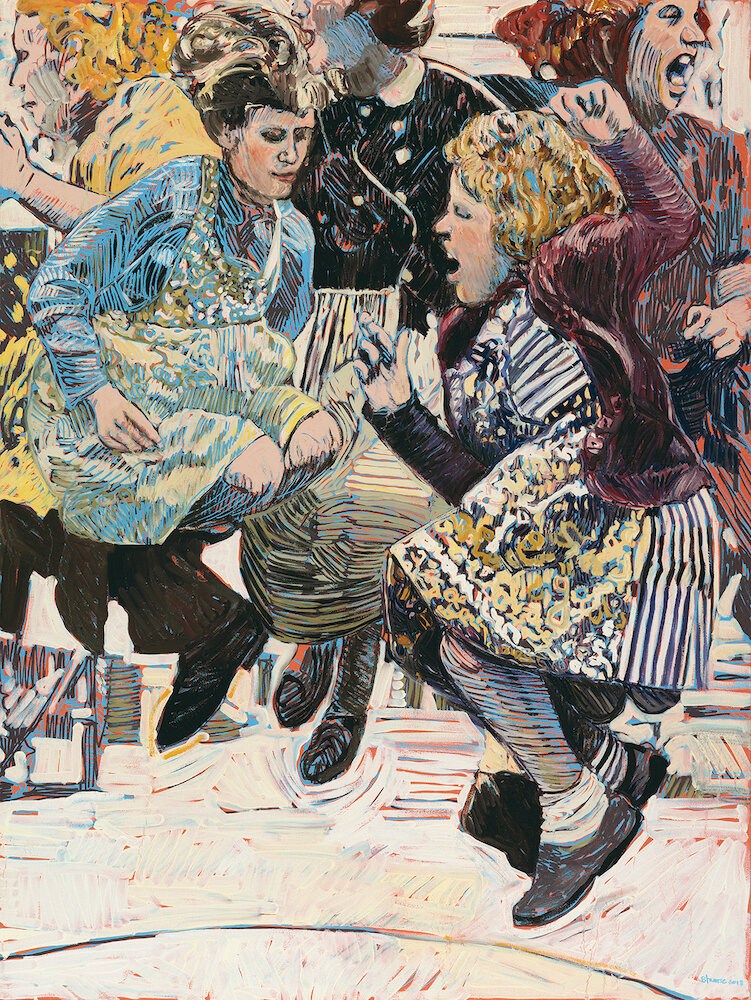
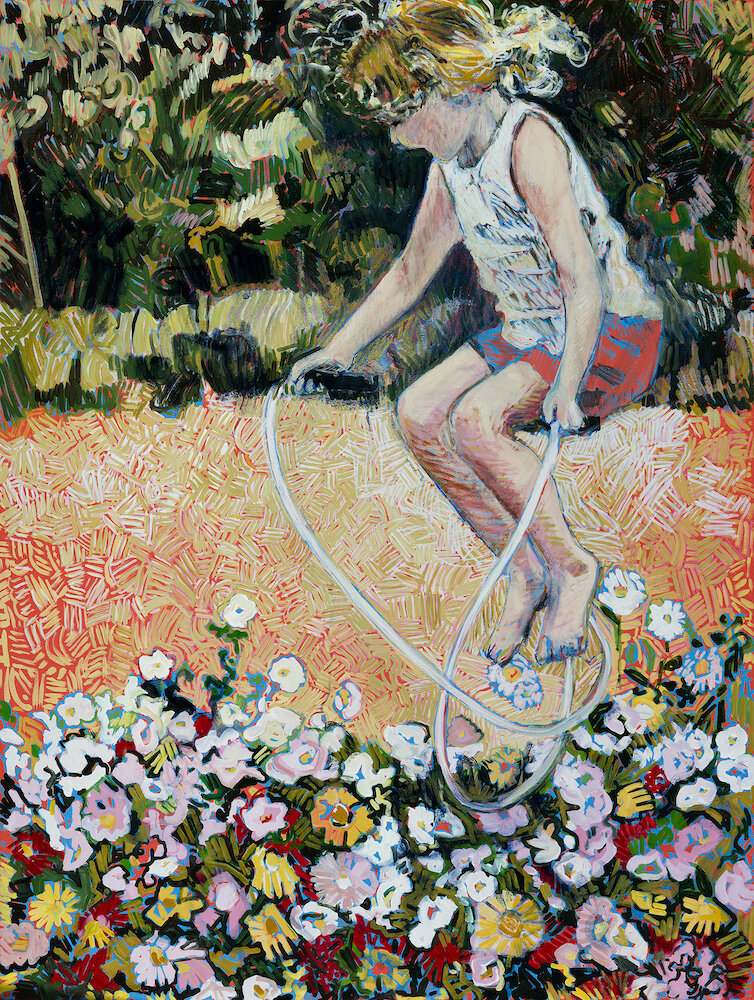
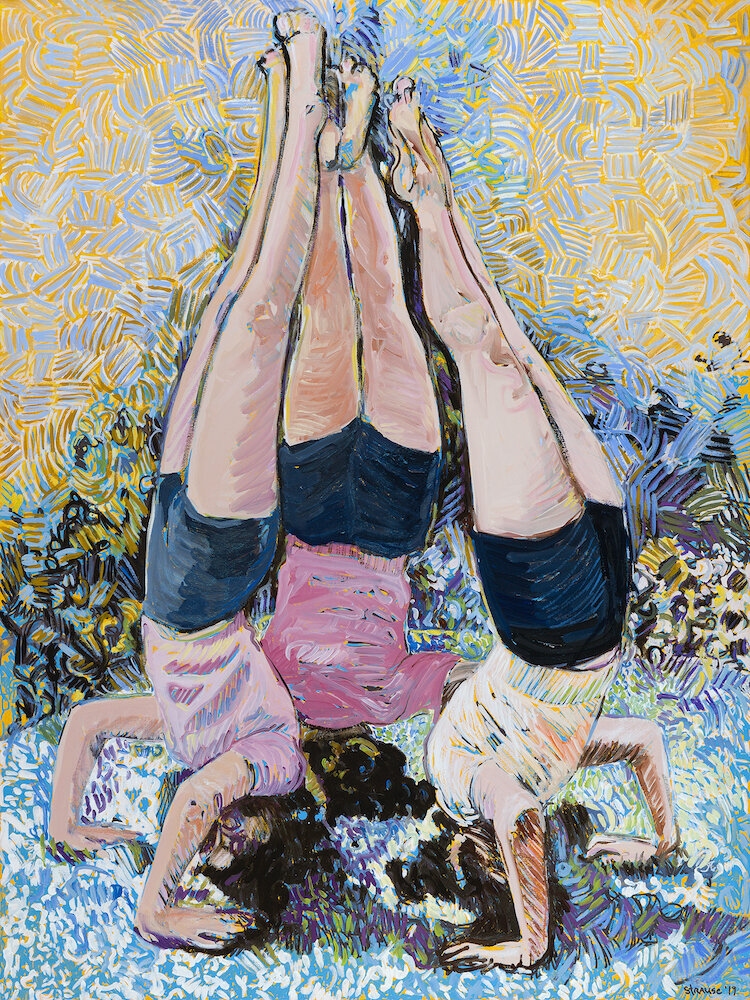
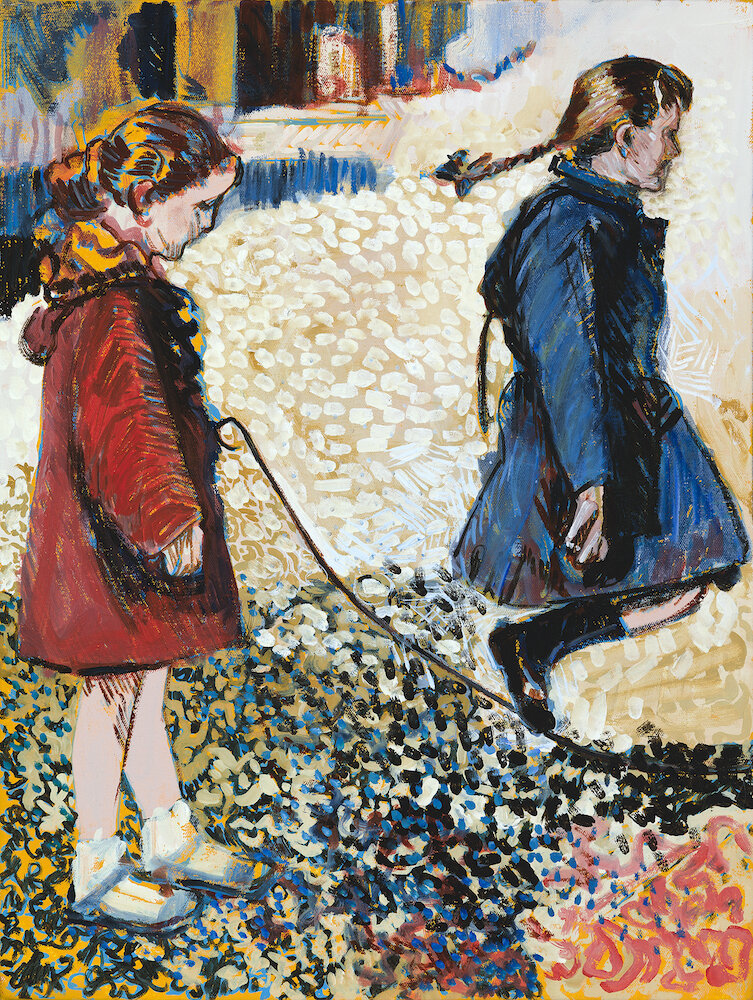
AAS: Katherine, I first saw your work at the Historic Arkansas Museum in 2003, I think, and I was mesmerized. I had not seen anything like that before. The quirky ‘vintage’ portraits of women painted in bright colors, but the faces were almost cartoon like. Just inviting the viewer to come up with their story. This is what you have been known for and what has made your work so popular. When did you develop this style of portraiture?
KS: Hi Philip! Thank you for asking me to participate and thank you for the kind words. Yes, I remember the 2003 show at HAM. That was a long time ago and a lot of subject matter and works under the bridge since then. I started painting figuratively after graduate school. I had studied and painted non-objectivity and was pushed to work with the figure because I felt like I had something I wanted to say about being human.
AAS: Where do you find the old photographs you use for inspiration?
Day Drinkers, oil on canvas, 40” x 30”
KS: Originally my Aunt who lives in Muscatine Iowa sent me a box FULL of cast-off photos from the 1920s through the 1960s. Aunt Maureen had worked for years at the Bamford Photography Studio in Muscatine. The shop was closing and they were getting rid of things. The box had come to Bamford from a family who had lost track of stories and identities of the people in the photos, although they were distant family they didn’t see the need to keep them but gave them back to the photo studio where many of the photos were taken. The images were precious at one point but had lost their connection. We see this all the time in thrift stores where you can find old family albums and loose photos. I spent a lot of time sorting through hundreds of photos from that box. As I did, I realized that this was one woman’s personal collection representing all of her friends and family throughout her lifetime. People’s faces appeared over and over again at different stages in their lives and I began to identify with the individuals and give them stories. I really enjoyed the process and working out what I could discover from these pictures alone. The idea that these images had to be attached to a memory to be important to the family fascinates me. What I worked out was these people could represent our families. They could represent us.
The images that I use now are mined from the internet. It does make it a bit harder because you’ve got to make sure that there isn’t a copyright on the image. When you have the original photo there is no question.
“The main reason I do like to look back and use images from another time in history is that things can look eerily similar to the history being made today.”
AAS: You were raised in Arkansas and like many local artists you got your first exposure to art classes at the Arkansas Arts Center. Would you talk about those formative years? Did you have role models growing up?
KS: I grew up in Conway and remember taking a class at the Arkansas Arts Center when I was about five or six years old. My older brother and I took a bus from Conway. The Arts Center was a little too far away to take many classes so we made a lot of art at home. I set up a studio in the attic of our family’s ranch-style home and made things up there. It was unbearable in the summer but it was a place where I could pretend to be an artist with a chair and an easel.
I completely lucked out to have a family friend in Gene Hatfield who was an Art Professor at Arkansas State Teachers College, later UCA. I went to school with his kids and our parents were acquainted. Gene was one of the kindest most expressive people I have ever known. and through the years I would see him making work and I was fascinated by him, his Art and his YARD!!!!!!! Gene created sculpture from made and found objects and it was the most outrageous and interesting place in our little town. Gene was a wonderful advocate for everything ART. He is truly beloved. He loved art and was the embodiment of what it is to be an artist. I miss driving by on Christmas day, Gene would put dozens of red horns (what I realized later were vuvuzelas) all over his sculptures, trees and yard to heralded in the day. It was always fabulous.
I was raised Catholic and spent twelve years in St. Joseph’s Catholic school so I spent a LOT of time in a beautiful German catholic church. The ceiling was patterned with German stenciling and it was full of spectacular stained-glass figures and designs. They also had life-sized statues and a lot of figurative paintings. A great example is the stations of the cross that consist of twelve paintings depicting figures at different moments on the day of the crucifixion. I spent a lot of hours looking and trying to work out how in the world they could make those images looks so real.
“The idea that these images had to be attached to a memory to be important to the family fascinates me.”
Katherine Strause in her studio
AAS: Talk about your later formal art training. I know you were influenced by the wonderful Susan Chambers, who I was fortunate to interview a few weeks ago.
KS: After graduating high school, I had a slew of jobs; driving a semi-truck, waiting tables, paying insurance claims. I lived in New Orleans, Baton Rouge, and Little Rock. Within a couple of years I realized if I was going to find a job I loved that I needed to get in school. I had a lot to learn. I was living and working in Little Rock so I enrolled at UALR. One of my first classes was an Art Humanities course with Susan Chambers. I was hooked. At that time UALR had some powerhouse faculty; Al Allen in painting, Gary Cawood in photography, Dr. Floyd Martin in Art History. I also made lifelong friendships with those same teachers along with many other faculty and fellow students; Brad Cushman, Christa Lawrence-Masters, and Colin Thompson are just a few. I graduated with a BA in Painting from UALR and then went on to a three-year MFA degree in Painting from Southern Illinois University at Edwardsville.
Over the years my subject matter and visual techniques have been inspired by artists such as Alice Neel, Carroll Cloar, Pierre Bonnard, and MANY others. Alice Neel’s work made me feel like I could use the figure in a very expressive way. Cloar has been a huge influence because of his connection to Arkansas and his use of photographs along with his techniques. My sister Michelle Strause and I were able to travel to London in February 2019 and saw The CC Land Exhibition Pierre Bonnard The Colour of Memory exhibition at the Tate Modern. It was a mind-blowing experience. A lot like visiting the Van Gogh Museum in Amsterdam, every piece was inspiring.
AAS: In 2004, you were awarded the inaugural Windgate Foundation Artist in Residence in Painting at the University of Arkansas at Little Rock. How did that experience prepare you for your faculty position at Henderson State and eventually to become Art Department Chair?
KS: The three year Artist in Residence in Painting position at UALR is the reason I was able to find a full-time position later. That opportunity was through a Windgate Foundation Grant that UALR had received and I have been grateful to those folks ever since. I worked for one year at Pulaski Technical College which was a great teaching experience. PTC and HSU share fortune of educating some students that may not have been given every opportunity. It’s great fun to watch them develop!
Lit Match, oil on canvas, 36” x 40”, Collection of the University of Mississippi, Oxford
AAS: Getting back to your art, you certainly do not hesitate in having the viewer confront the social issue of that day. Lit Match is so poignant – the figures in the background really tell the story of that day and time.
KS: Oh, thank you! The main reason I do like to look back and use images from another time in history is that things can look eerily similar to the history being made today. I’m asking that people see the strangeness of injustice with our present-day eyes and recognize where it exists here, now. Lit Match along with Arrest is about the Freedom Riders that were arrested in the Little Rock bus station on July 10th, 1961. The photos were so striking of these women that I wanted to recreate the episode. The two women are coexisting, doing what everyone else in that image is afraid will happen to their culture. The two women who are the same age just different racial backgrounds are familiar with each other. They are together. They are sharing a cigarette and one woman lights the others in an intimate gesture of a close friendship and comradery. It’s like sharing a secret.
AAS: Artists have a voice in society. Is the importance of not shying away from tough social issues something you try to instill in your students?
KS: I try to show students that they have plenty to say from their own experiences. That they are unique. Yes I hope that they will always use their art to promote honesty in the world.
“Being around young art students reminds me to be hopeful!”
AAS: You are painting more children in motion, jumping rope or performing acrobatics. Are you going back to your childhood for inspiration [Ha!]?
KS: Of course! I grew up with the best neighborhood full of kids. I am looking for images of women in a focused act of skill or defiance, like the girls in headstands, or jumping rope with all their might. Those are acts of liberty and freedom. The women are in full possession of themselves, in charge of their space, their bodies, their feelings, and their actions. They aren't going to sit down or be quiet. The figures spring and bound through the canvases to exist on their terms; they jump and run to shake off constraints.
1972 Jump Rope, oil on canvas, 36” x 24”
AAS: When I look at 1972 Jump Rope I can’t help but hear it as much as see it. The girls have blacked out all their surroundings so they can concentrate on the rope – and you can ‘hear’ their excitement on their faces.
KS: That’s it exactly! It’s the moment when you are in control. You have the skill and you are in charge. No one is telling you to sit down, to be quiet.
AAS: Is it just my impression or do your recent works have a more energized painting style? Would you talk about your painting technique? You use a very wet canvas?
KS: If we could look through all the years of work you’d definitely see a progression in technique. Oil paint can give you a depth of color and flexibility that is beautiful all on its own. I enjoy letting the paint be beautiful and luscious on its own. Over the years I have developed ways of layering saturated color with brushstrokes with wet on wet application and it has increased the vibration and visual movement in the work. This focus on the expressive application and profuse color transforms the original black and white snapshots into dynamic and energetic paintings.
First Cousins,, oil on canvas, 36” x 40”, private collection
AAS: There are many examples in your work where you have captured so perfectly facial expressions that completely tell the story using only a (seemingly) few strokes. The piece we talked about earlier, Lit Match is a great example, I think. That ability is very special. Perhaps my favorite piece of your also comes to mind – First Cousins.
KS: My Mother and Father are both from Iowa. My Mom was one of nine brothers and sisters and all those people had 43 kids, SO I have 43 first cousins. Family reunions were FULL of cousins just like those pictured bored and wanting to get out of their dress clothes. I always thought this scene might be a baptism? The cake has been cut and they are waiting on a ride home. I do need to mention that none of us were cool enough to smoke at least IN FRONT of our Aunts and Uncles. That wouldn’t have happened.
AAS: What are art majors most worried about these days? What do you feel is the most important thing you can impart to them as a teacher/role model?
KS: They worry about what most people in America are worried about and that is making money. A lot of students feel that way when they come into the program and if they are a studio major they go out understanding that it’s not about money. It’s about the love of the craft, that you have developed a skill something you build on your entire life. Our culture has created a vacuum when it comes to craft and making things. Do what you love and the money will show up. If you are an artist of any kind and have been just a tiny bit successful you know what it is to be diligent or you wouldn’t have been able to make the work. Making work for a long time takes determination and that gives you the ability to focus, to have several jobs if that’s what you need to get by, or to be able to work hard enough to make the most and then hopefully make the best. That is how you do it.
“When you exhibit work, you are telling your story and seeing if there is anyone out there that gets your message. For me, it’s like a message in a bottle.”
AAS: Has teaching and being constantly around young art students affected your approach to painting or what you want to accomplish with your works?
KS: Being around young art students reminds me to be hopeful! It also reminds me that anything in the world can be accomplished, especially developing a skill through practice. Every one of those students come in and all I can see in them is pure potential. All they have to do to be successful is put in the time and attention. Focus is hard but worth the outcome. I’m not sure how factual the 10,000 hours of practice theory is but the basis is true. ANYTHING they do a lot, they will get better at and that applies to me. Practice makes the master.
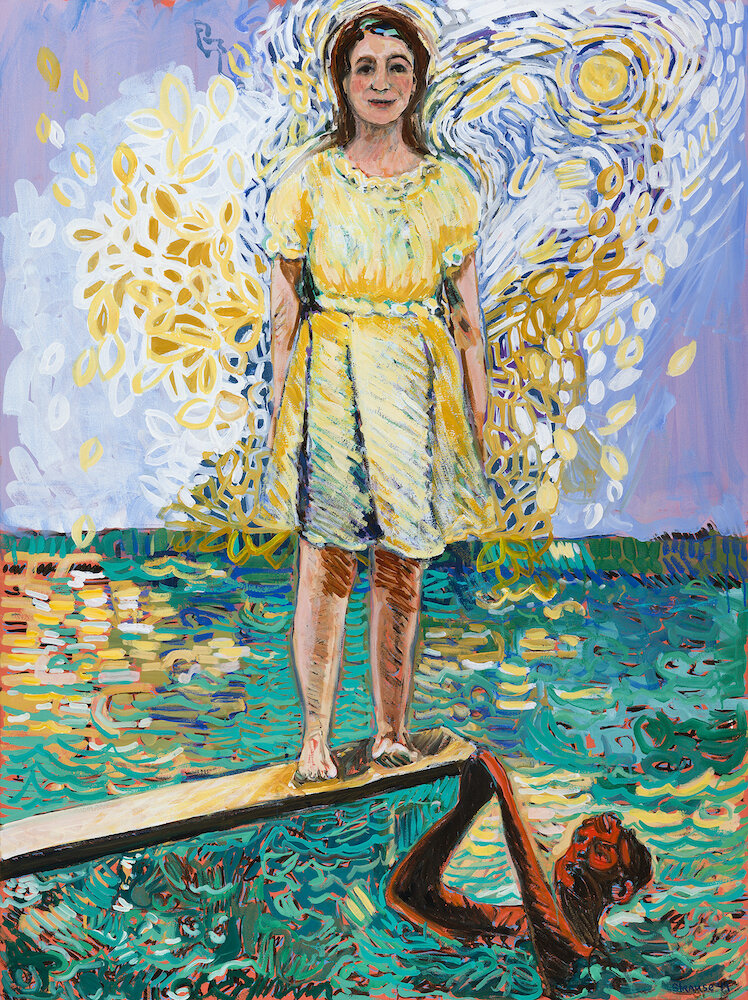
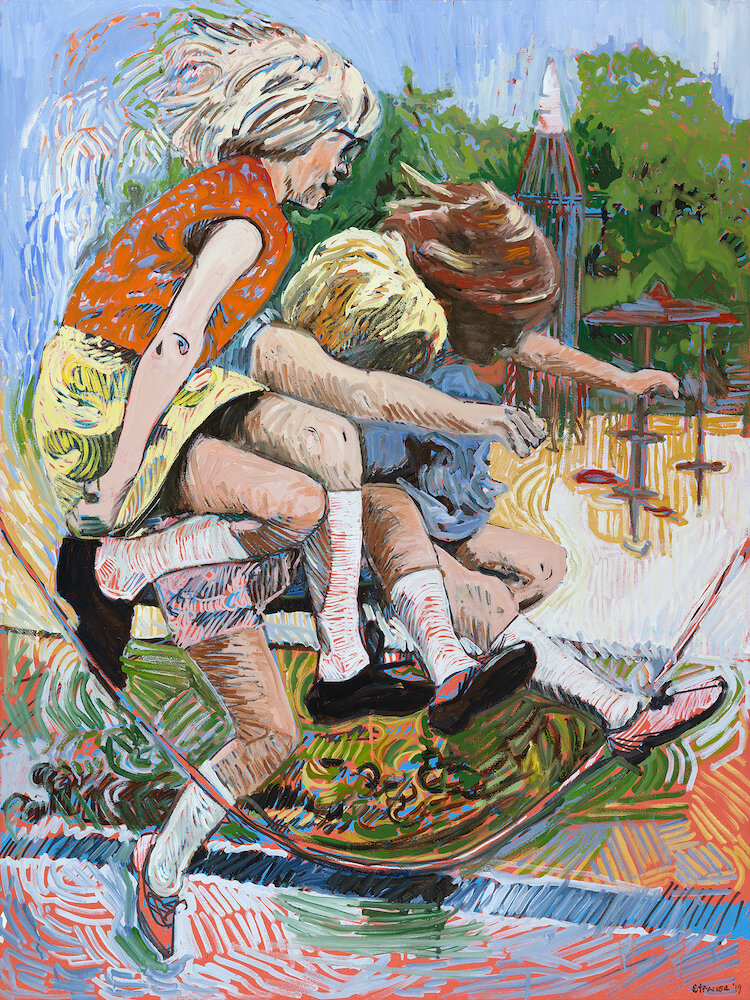

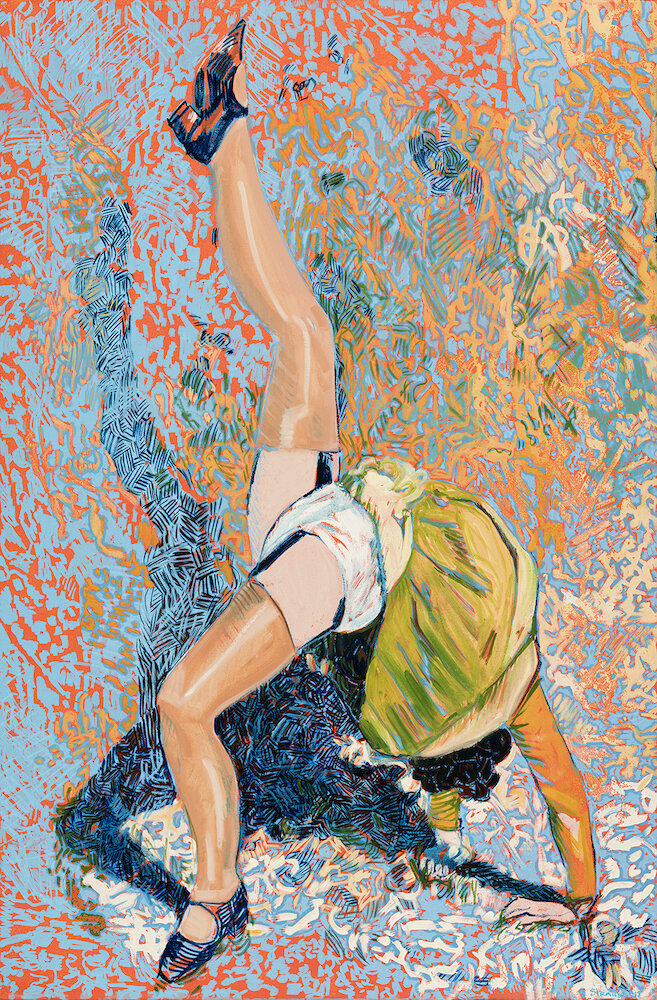
AAS: Your works are in public and private collections around the country and you seem to enjoy exhibitions. Are exhibitions and competitions only about notoriety and selling work or is there more to it than that?
KS: Exhibitions and competitions are opportunities to GET WORK DONE. That’s really it. Making work is about having a deadline, going through the unknown, making discoveries you multiply that by time spent working and you have NEW work. Many of my friends who are great artists don’t do well making work without a deadline and consequently, they don’t make art. As a full-time faculty member and department chair, I am fairly certain that I wouldn’t be able to find time for the studio if I didn’t create and seek out dates for shows and exhibitions. Notoriety is a byproduct and not a bad one but it doesn’t really motivate me. I certainly enjoy selling work to collectors but I also love it when anyone is moved by something I’ve spent time on. When you exhibit work, you are telling your story and seeing if there is anyone out there that gets your message. For me, it’s like a message in a bottle. When you make that connection it’s magic. It’s a dialogue. The viewer brings their own perceptions and stories to the work, just like I do from the original images.
